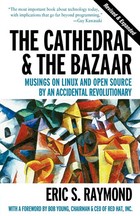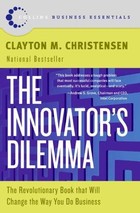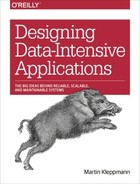In an age where our digital lives are increasingly tethered to cloud services, a quiet revolution is brewing. From Google Docs to Figma, from Slack to Trello, we've embraced the convenience of cloud-based collaboration and cross-device synchronization. But as our dependence on these services deepens, so does our vulnerability to their limitations and potential failures.
The promise of cloud computing was compelling: work from anywhere, collaborate seamlessly, never lose your data. Yet for many creative professionals and power users, this promise has come with hidden costs that extend far beyond monthly subscription fees.
The Hidden Cost of Convenience
When you pour creative energy into a project—whether it's a technical document, a complex algorithm, or a user interface design—you develop an emotional attachment to that work. It becomes part of your intellectual property, your portfolio, your legacy. But in the cloud-first world, that attachment comes with an uncomfortable truth: you don't truly own your data.
Every interaction with your work must pass through someone else's servers. Every feature you can use is limited by what the service provider allows. Your ability to access, modify, or even preserve your own creations depends entirely on the continued existence and goodwill of a third party.
This isn't just a philosophical concern—it's a practical one. Services shut down, companies pivot, terms of service change, and servers go offline. When they do, users often find themselves locked out of their own work, sometimes permanently.
The Local-First Alternative
Local-first software represents a fundamentally different approach to digital tools. Instead of treating local storage as a cache for cloud data, local-first applications make local data the primary source of truth, with cloud synchronization as an optional enhancement.
This architecture delivers several key benefits:
Immediate Responsiveness: Without network round-trips, applications feel instant and fluid. No more loading spinners for basic operations.
Offline Capability: Work continues seamlessly whether you're on a plane, in a coffee shop with poor WiFi, or dealing with a service outage.
Data Ownership: Your files remain yours, stored locally in formats you can access with or without the original application.
Privacy by Design: Sensitive data never leaves your device unless you explicitly choose to sync it.
The Technical Challenge
Building local-first software isn't just a philosophical shift—it's a technical one that requires solving complex problems around synchronization, conflict resolution, and data consistency.
Traditional web applications can rely on a central database to resolve conflicts and maintain consistency. Local-first applications must handle scenarios where the same data is modified simultaneously on multiple devices while offline, then later synchronized.
Conflict-free Replicated Data Types (CRDTs) and operational transformation algorithms offer solutions, but they require careful design and implementation. The complexity of building robust sync engines has been one of the biggest barriers to local-first adoption.
Business Model Innovation
One of the most significant challenges facing local-first software is economic sustainability. The subscription model that dominates cloud software exists partly because ongoing server costs require ongoing revenue. Local-first applications eliminate most server costs but must find alternative revenue models.
Several approaches are emerging:
Premium Features: Basic functionality remains local and one-time purchase, while advanced features like enhanced sync or collaboration require subscription.
Software as a Product: Return to the traditional model of selling software licenses with optional paid upgrades.
Hybrid Models: Separate the application from sync services, allowing users to choose their own sync provider or self-host.
Cooperative Ownership: User-owned cooperatives that democratically govern development and operations.
The Tooling Renaissance
The local-first movement is gaining momentum partly due to improved tooling. Frameworks like Electric SQL, Jazz, and Rocicorp's Zero are making it easier for developers to build local-first applications without implementing sync engines from scratch.
These tools abstract away much of the complexity around conflict resolution and data synchronization, allowing developers to focus on application logic and user experience rather than distributed systems challenges.
Real-World Applications
Local-first principles are already proving valuable across various domains:
Creative Tools: Applications like Figma's offline mode and Notion's local-first architecture show how creative professionals benefit from immediate responsiveness and data ownership.
Industrial Applications: Manufacturing and industrial control systems require reliability and cannot depend on internet connectivity for critical operations.
Personal Productivity: Note-taking applications like Obsidian and Logseq demonstrate how local-first design can create more reliable and user-controlled productivity tools.
Financial Software: Personal finance applications benefit from local-first design both for privacy reasons and to ensure access during network outages.
The Path Forward
The shift toward local-first software isn't just about technology—it's about changing our relationship with digital tools. Instead of renting access to our own data, we can own it. Instead of depending on corporate servers for basic functionality, we can have applications that work reliably regardless of network conditions.
This doesn't mean abandoning collaboration or cross-device synchronization. Modern local-first applications can provide these features while maintaining user control and data ownership. The key is making these features optional enhancements rather than fundamental dependencies.
Reclaiming Digital Autonomy
As artificial intelligence and automation become more prevalent in software, the principles of local-first design become even more critical. When AI agents are collaborating with humans in real-time applications, the need for responsive, reliable, and user-controlled software infrastructure becomes paramount.
The local-first movement represents more than a technical architecture—it's a philosophy of digital autonomy. In a world where our creative work, personal communications, and business operations increasingly depend on software, the question of who controls that software becomes a question of who controls our digital lives.
By choosing local-first applications and supporting developers who build them, we can move toward a future where technology truly serves users rather than extracting value from them. The tools exist, the community is growing, and the benefits are clear. The question isn't whether local-first software will succeed—it's how quickly we can make it the norm rather than the exception.














